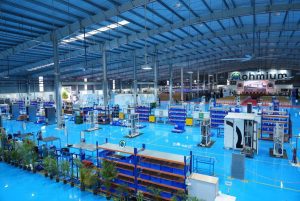The study, whose findings have been published in the journal Nature Catalysis, could help accelerate the use of hydrogen as an environmentally friendly source of energy in transportation and other applications.
Fuel cells generate power using oxygen from the atmosphere and hydrogen. A key step in the process is using a catalyst to break the bonds between pairs of oxygen atoms. The catalysts that work best are highly active, in order to drive the reaction, while also being stable enough to be used for long periods of time. And for those designing fuel cells, finding the best catalysts has been a major challenge.
Platinum is the best element for the purpose, but its rarity makes the technology prohibitively expensive for large-scale adoption. An alloy combining platinum with a more readily accessible metal or metals would reduce the cost, but there has never been a practical, real-world method for quickly screening which alloy would make the best catalyst.
The new method predicts both the potency and the stability of platinum alloy catalysts. It was developed using a combination of experiments, complex computation and X-ray spectroscopy, which allowed the investigators to precisely identify chemical properties.
According to Yu Huang, a professor of materials science and engineering at the UCLA Samueli School of Engineering, the method could be applied to potential catalysts mixing platinum with a subset of metals beyond nickel and cobalt.
The research group is now collaborating with Toyota Motor Corp. to develop fuel cell catalysts with possible real-world applications.
The research was supported by the U.S. Office of Naval Research and the National Science Foundation.






